The City of London is the historic heart of London. This area was already a bustling trading post almost 2000 years ago, when it was part of the Roman Empire. Many of the irregular streets still follow the ancient Roman roads. The boundaries of the City also loosely follow the path of the Roman wall that was built here in the 2nd century AD.
Today the City is a mostly commercial district dominated by the stately buildings and skyscrapers that house offices for the finance industry. There are, however, plenty of historical landmarks that were built in an era when the City was still densely populated. The star here is the majestic St. Paul’s Cathedral, but there are also noteworthy civil structures such as the Guildhall and the Leadenhall Market.
Concise History
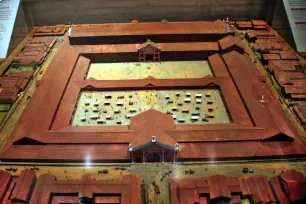
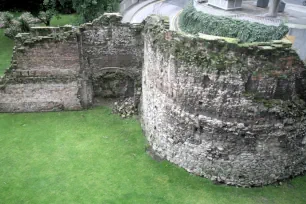
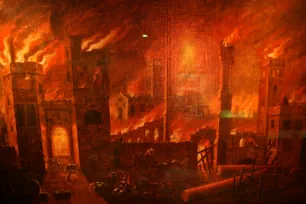
Shortly after the invasion of Britain by emperor Claudius in AD 43, the Romans founded the settlement Londinium at a strategic location near the River Thames, where the river could be crossed. Ships from the continent were able to reach the settlement, which quickly grew into the largest town in Britain. Very few remains of these early days are visible today, although traces of the forum from the first century AD, public baths and an arena as well as a third-century temple have been excavated. The most visible remain of Londinium is the city wall, which still roughly defines the boundaries of the City of London. The wall was built in the early 3rd century and reinforced in the ninth century during the reign of the Anglo-Saxon King Alfred the Great.
London’s population grew quickly during the sixteenth century, when it became the largest city in Western Europe. At the time, most people still lived within the old city walls. Despite the dramatic Great Fire of 1666, which destroyed around 13,200 houses, the population continued to grow by leaps and bounds. This started to change during the eighteenth century, when the population of the City declined dramatically. Many people moved to the suburbs and their houses were rented out or sold to commercial firms.
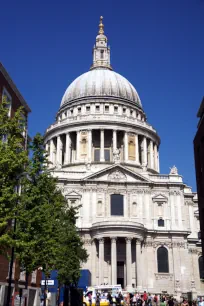
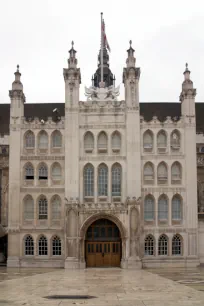
Since the 1970s, the high finance dominates this historic part of London, which led to the construction of a host of modern skyscrapers. Despite attempts to lure back residents to the City, very few people actually still live here, and the City is almost deserted during the weekends, but on weekdays it buzzes with activity.
Sights in the City of London
Plenty of historic landmarks attest to the City’s storied past. The most famous is the domed St. Paul’s Cathedral, built in the seventeenth century by Sir Christopher Wren after the Great Fire had destroyed the existing cathedral. Wren built many more churches in the City – fifty-one in total; the nearby St. Mary-le-Bow church (only those born within earshot of the church’s clock can be considered a true Cockney), the Gothic St. Mary Aldermary and the St. Margaret Pattens Church with its tall spire are just a small sample of the twenty-three surviving churches designed by Wren.
Some buildings managed to survive the Great Fire of 1666, most notably the Guildhall, a beautiful early fifteenth-century edifice that was reconstructed in the seventeenth century in a Neo-Gothic style.
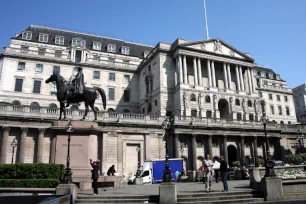
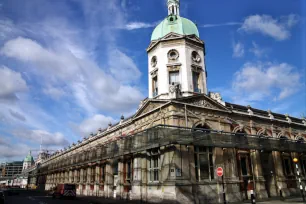
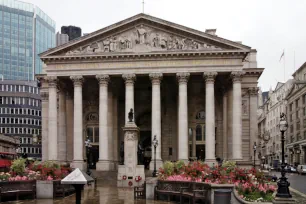
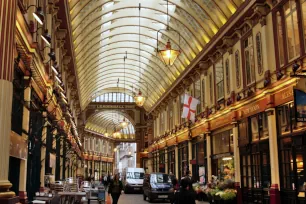
One of the few Victorian structures that survived to this day is the Leadenhall Market, a glass-covered shopping arcade. Nearby is the Royal Exchange building, a stately 19th century building. Once a center of commerce, it is now an upscale shopping center. Just north of the Royal Exchange is the equally imposing headquarters building of the Bank of England, which is also home to a museum dedicated to the bank’s three hundred year history. Opposite the bank stands the Mansion house – the official residence of the Mayor of the City of London – with a Palladian facade to match the neoclassical facades of the bank and exchange buildings.
There are also some visible remains of the very early origins of the City of London. The longest surviving remnant of this era is the London Wall, originally built in the second century, but later expanded at around 200 AD. The four-and-a-half kilometers long (almost 3 miles) and up to four meters high (14ft) wall ran in a more or less semicircular shape from the site of the current Blackfriars Station to the site of the Tower of London at Tower Hill. It was still mostly intact until the seventeenth century, after which it was gradually demolished as the city expanded. Some sections of the wall can be seen along the route, including at Tower Hill – a statue of Trajan marks the site – and at the former site of the Museum of London, which was located at the site of a former bastion on the route of the Roman wall. Another visible remnant of the Roman era is the ruin of the Temple of Mithras, excavated in 1954. Several sculptures discovered at the site are now on display at the Museum of London, which has an extensive exhibition on London’s Roman past. In 2023 the museum moved to the Smithfield Markets, an old meat market not far from its original site at the Barbican.
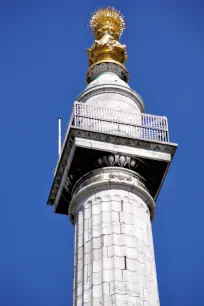
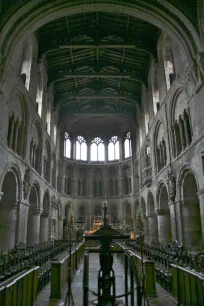
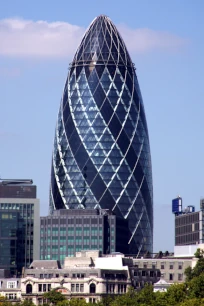
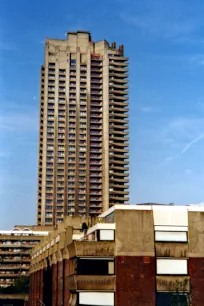
Other displays in the museum cover the history of London until today, with exhibitions that focus on the different periods in the history of London – Saxon, medieval, Tudor, Stuart and other – and on important events such as the devastating fire of 1666. To commemorate this ‘Great Fire’, a tall column – simply named ‘The Monument‘ – was erected in 1671 near the location of the start of the fire in Pudding Lane. A long staircase leads to a platform on top of the Monument, from where you have a great view over the City.
Near the Smithfield Markets, we find the church of St. Bartholomew-the-Great, the oldest monastic church in London. The church was originally built in 1123 in a Romanesque style under the guidance of the Augustinian monk Rahere, who is buried here in a large tomb.
Modern Architecture
The City isn’t all about history or historic buildings. There has been plenty of construction activity in the past couple of decades, and today many of London’s tallest office towers can be found here, including the National Westminster Tower (or Natwest Tower), London’s tallest skyscraper when it was built in 1980.
Another well-known modern building is the Lloyd’s of London, designed by Richard Rogers, the architect of the Centre Pompidou in Paris (and it shows).
A more recent, but equally remarkable tower in the City is 30 St. Mary Axe, commonly known as the «Gherkin». This modern glass tower with its unusual cigar-like shape was designed by Fosters and Partners. The 180-meter-tall tower, built in 2003, had a big impact on the City’s skyline.
Yet another eye-catching skyscraper in the City is 20 Fenchurch Street, a 34-story tower with a large sky-garden. The tower has a peculiar design with concave-shaped facades that widen towards the top, which earned it the nickname «Walkie-Talkie» Building. And the 225-meter-tall (738 ft) 122 Leadenhall Street has earned the nickname «Cheesegrater», since it has a shape similar to that of the kitchen utensil.
Not all modern buildings are office towers. One of the largest postwar complexes built in the City is The Barbican Centre, a 14-hectare (35 acres) large, mainly residential complex that was conceived as a city inside a city: it is one large network of apartment buildings, gardens, garages, exhibitions halls and offices connected to each other by pedestrian bridges and walkways. Some of London’s most prominent cultural organizations, including the London Symphony Orchestra and the Royal Shakespeare Company, are located in this complex.

